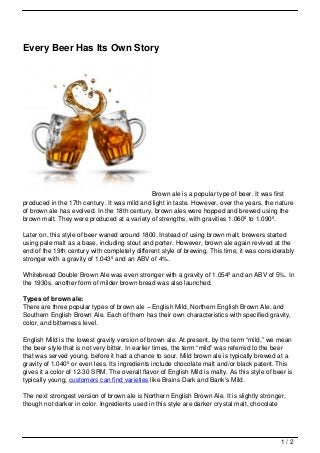Report
Share
Download to read offline

Recommended
Recommended
More Related Content
Featured
Featured (20)
Product Design Trends in 2024 | Teenage Engineerings

Product Design Trends in 2024 | Teenage Engineerings
How Race, Age and Gender Shape Attitudes Towards Mental Health

How Race, Age and Gender Shape Attitudes Towards Mental Health
AI Trends in Creative Operations 2024 by Artwork Flow.pdf

AI Trends in Creative Operations 2024 by Artwork Flow.pdf
Content Methodology: A Best Practices Report (Webinar)

Content Methodology: A Best Practices Report (Webinar)
How to Prepare For a Successful Job Search for 2024

How to Prepare For a Successful Job Search for 2024
Social Media Marketing Trends 2024 // The Global Indie Insights

Social Media Marketing Trends 2024 // The Global Indie Insights
Trends In Paid Search: Navigating The Digital Landscape In 2024

Trends In Paid Search: Navigating The Digital Landscape In 2024
5 Public speaking tips from TED - Visualized summary

5 Public speaking tips from TED - Visualized summary
Google's Just Not That Into You: Understanding Core Updates & Search Intent

Google's Just Not That Into You: Understanding Core Updates & Search Intent
The six step guide to practical project management

The six step guide to practical project management
Beginners Guide to TikTok for Search - Rachel Pearson - We are Tilt __ Bright...

Beginners Guide to TikTok for Search - Rachel Pearson - We are Tilt __ Bright...
Every Beer Has Its Own Story
- 1. Every Beer Has Its Own Story Brown ale is a popular type of beer. It was first produced in the 17th century. It was mild and light in taste. However, over the years, the nature of brown ale has evolved. In the 18th century, brown ales were hopped and brewed using the brown malt. They were produced at a variety of strengths, with gravities 1.060º to 1.090º. Later on, this style of beer waned around 1800. Instead of using brown malt, brewers started using pale malt as a base, including stout and porter. However, brown ale again revived at the end of the 19th century with completely different style of brewing. This time, it was considerably stronger with a gravity of 1.043º and an ABV of 4%. Whitebread Double Brown Ale was even stronger with a gravity of 1.054º and an ABV of 5%. In the 1930s, another form of milder brown bread was also launched. Types of brown ale: There are three popular types of brown ale – English Mild, Northern English Brown Ale, and Southern English Brown Ale. Each of them has their own characteristics with specified gravity, color, and bitterness level. English Mild is the lowest gravity version of brown ale. At present, by the term “mild,” we mean the beer style that is not very bitter. In earlier times, the term “mild” was referred to the beer that was served young, before it had a chance to sour. Mild brown ale is typically brewed at a gravity of 1.040º or even less. Its ingredients include chocolate malt and/or black patent. This gives it a color of 12-30 SRM. The overall flavor of English Mild is malty. As this style of beer is typically young, customers can find varieties like Brains Dark and Bank’s Mild. The next strongest version of brown ale is Northern English Brown Ale. It is slightly stronger, though not darker in color. Ingredients used in this style are darker crystal malt, chocolate 1/2
- 2. and/or black patent. Sometimes a bit of toasted malt is used to add nutty flavor. This is considerably bitter in taste, centered on 15 IBUs. The two common commercial examples of this style of beer are Newcastle and Samuel Smith’s Nut Brown Ale. A slightly darker version of brown ale is Southern English Brown Ale. This is sweeter in taste and fuller-bodied than Northern English Brown Ale. The hop level is also higher in this style. It is a perfect blend of dark crystal malts and chocolate malt. Brewing style of brown ale: Brown ales are popularly produced from a base of English pale malt. Crystal malt is used commonly, however at times chocolate malt is also used. Black and roasted malts are also used rarely. Home brewers sometimes use a wide variety of specialty malts (like aromatic malt, toasted malt, oatmeal and others) to add some special character. However, commercial brewers typically use 1-2 dark malts to add color and character. Yeast selection primarily depends on the style of brown ale you are brewing. Water high in carbonates is preferably used, especially for the English style of brewing. English brown ales are lightly hopped and therefore, do not leave a much bitter taste. Popular English hops used for this style of beer are Goldings, Fuggles, and Tettnanger. About the Author: Andy Steven is an avid traveler, favor drinking this style brown ale almost throughout the year while traveling, and firmly believes that beer is not just for a party but also for a life. Every Beer Has Its Own Story 2/2 Powered by TCPDF (www.tcpdf.org)